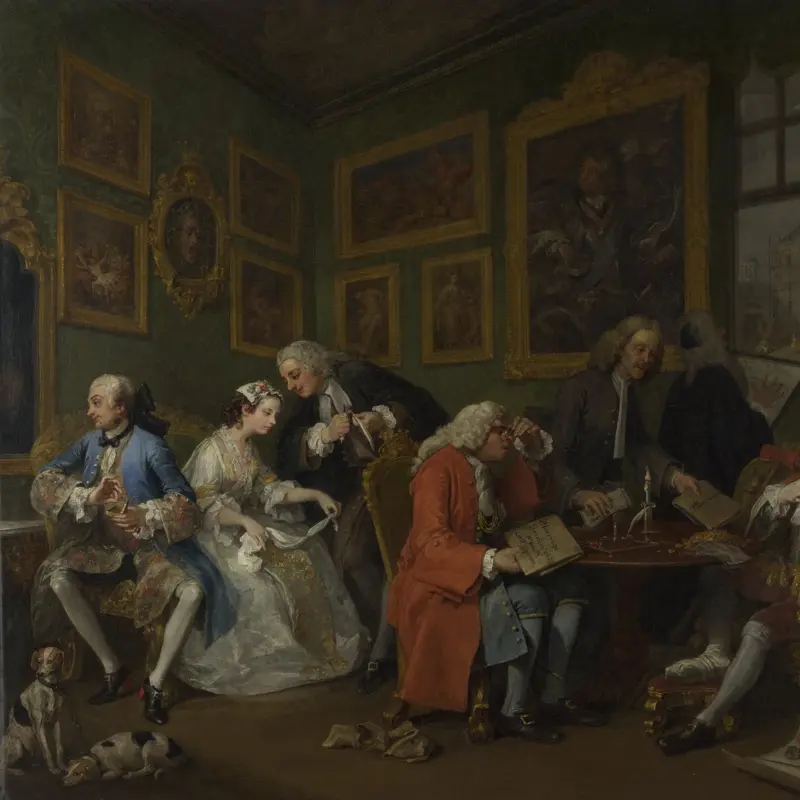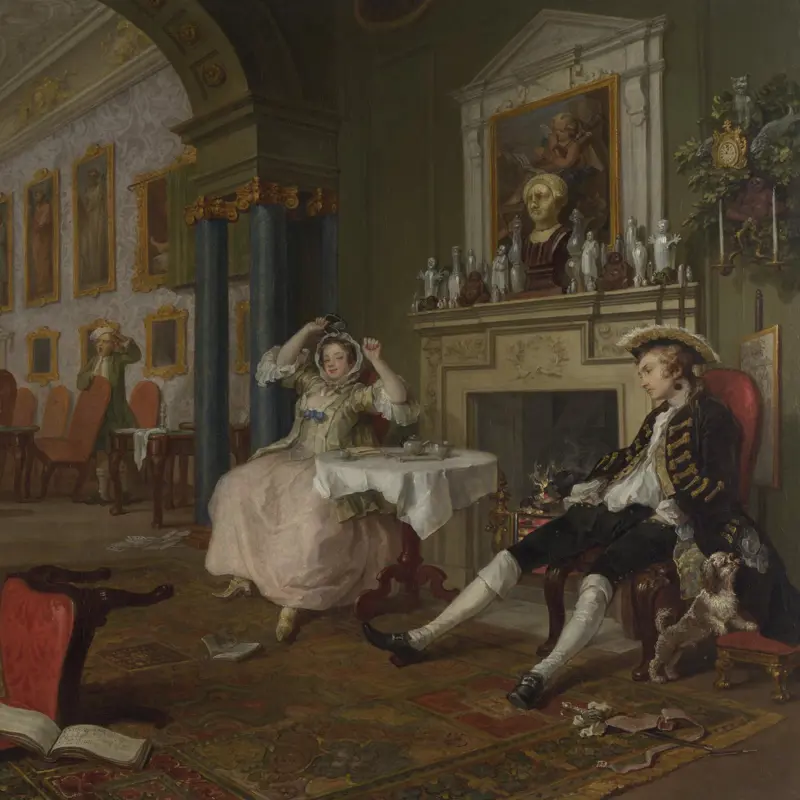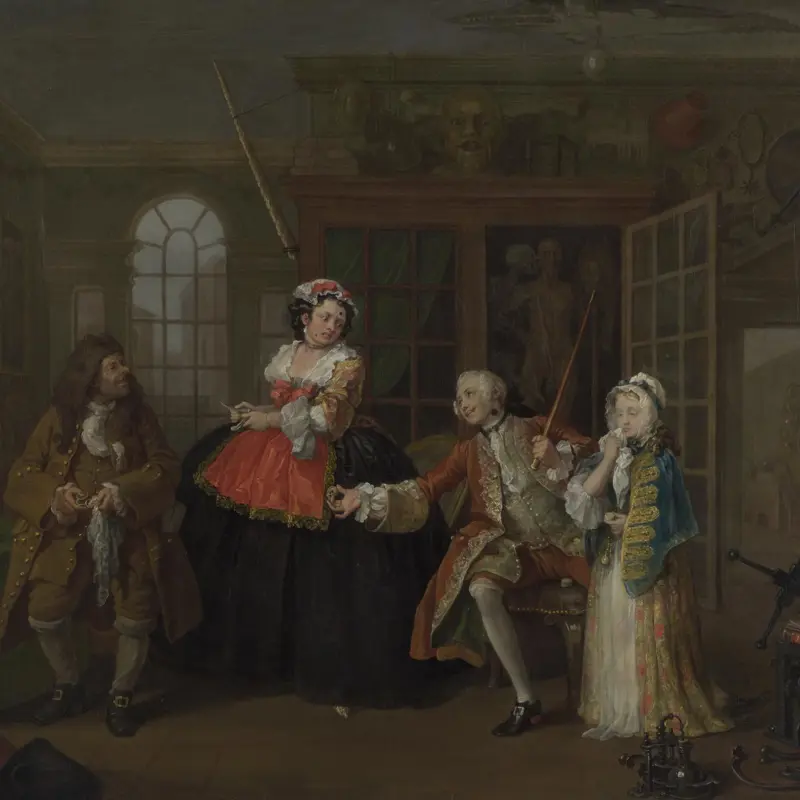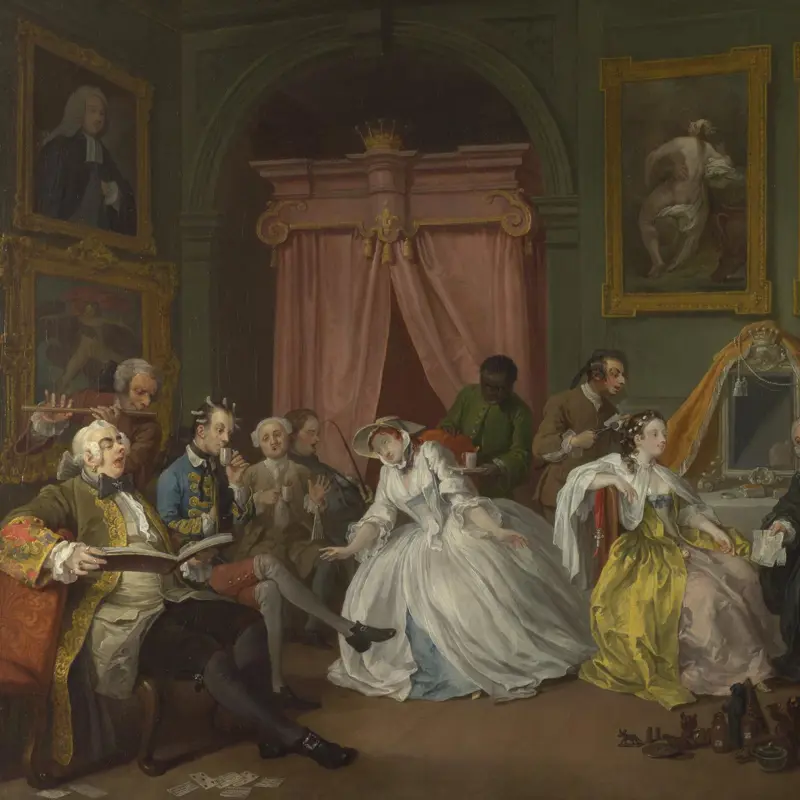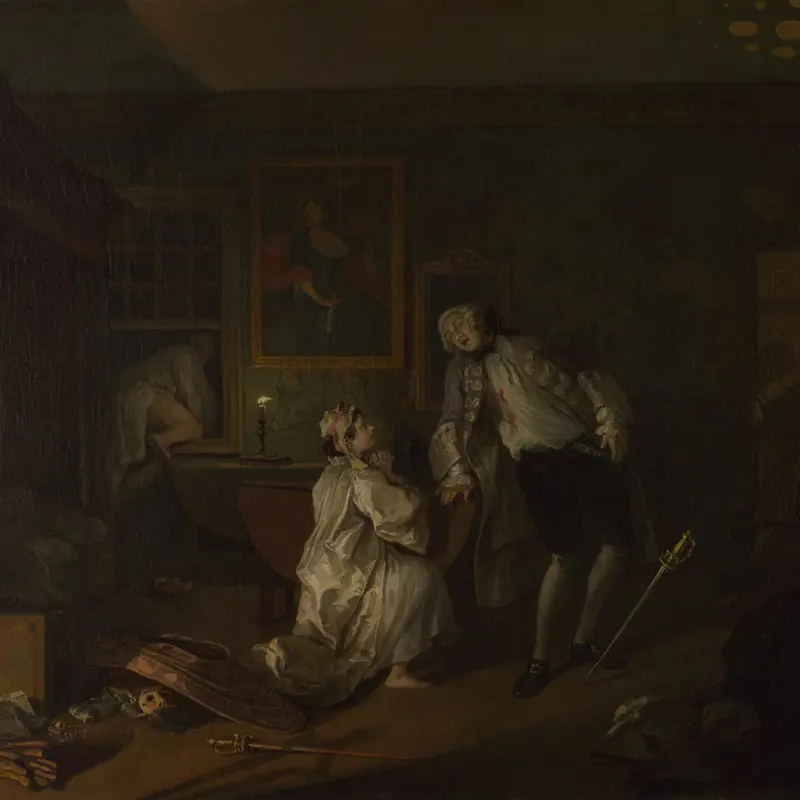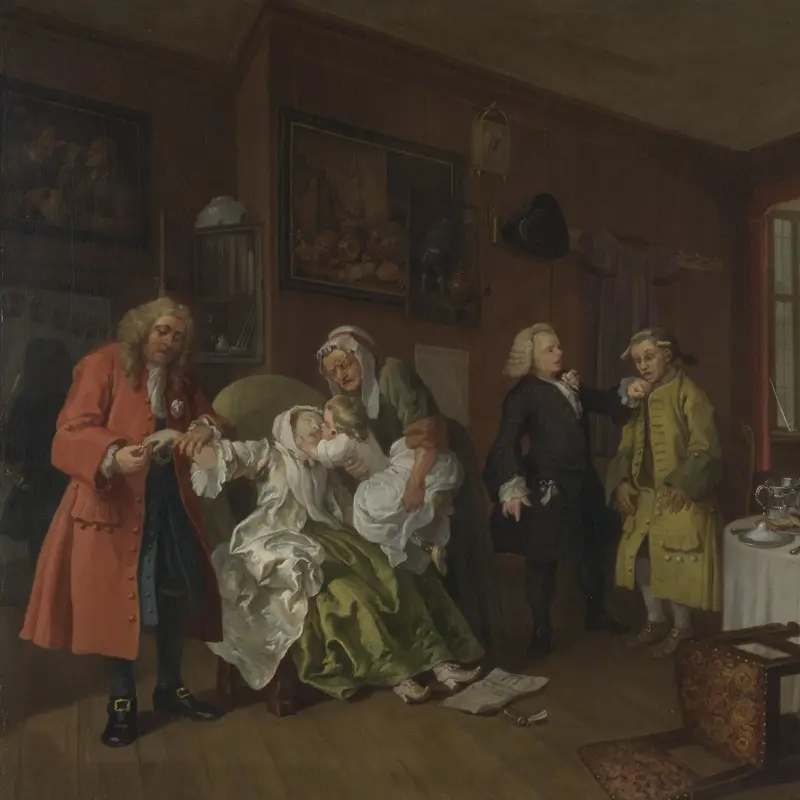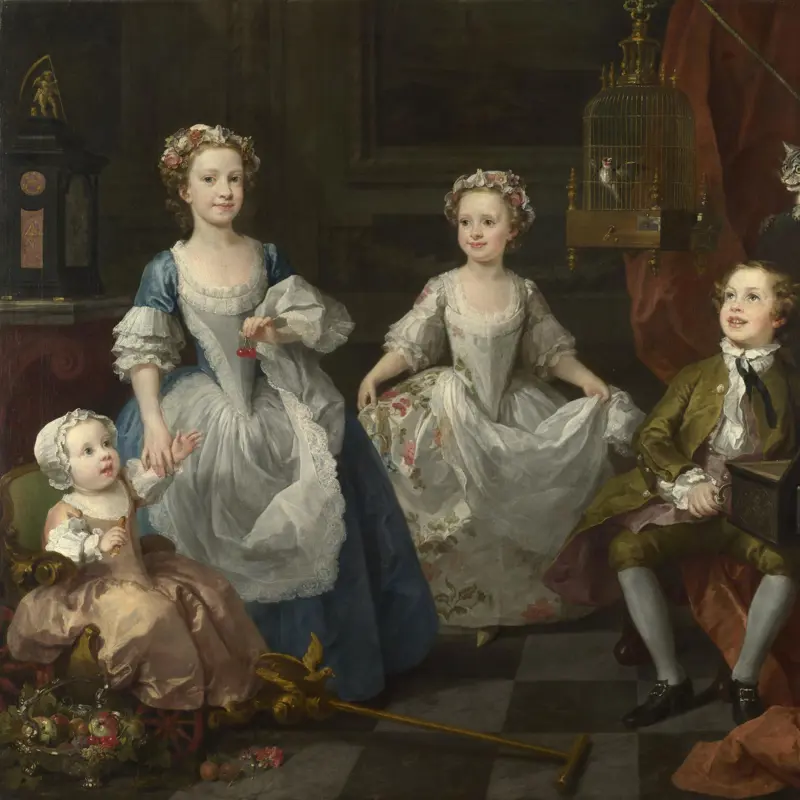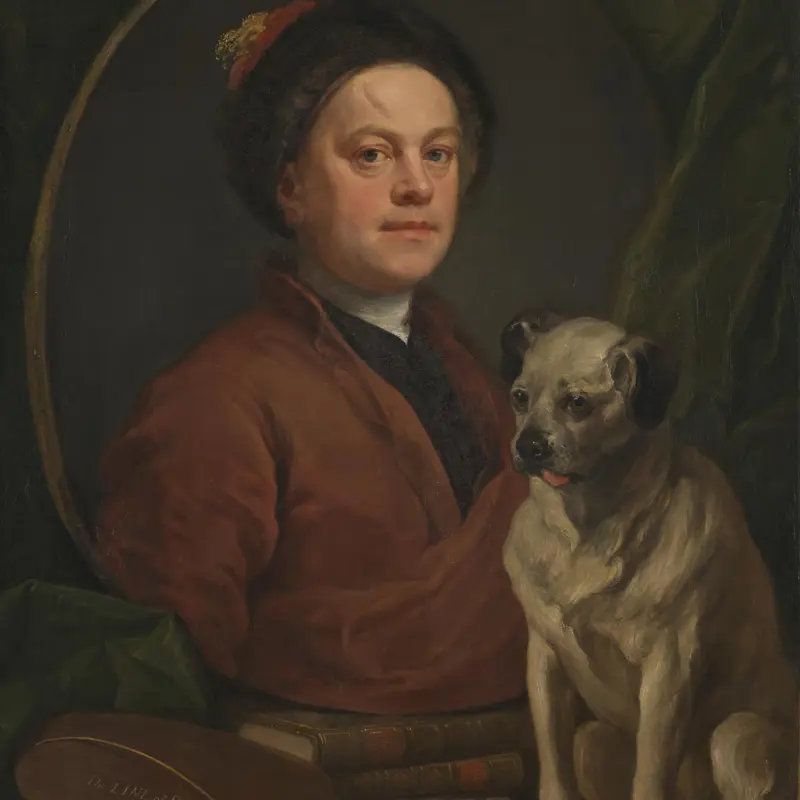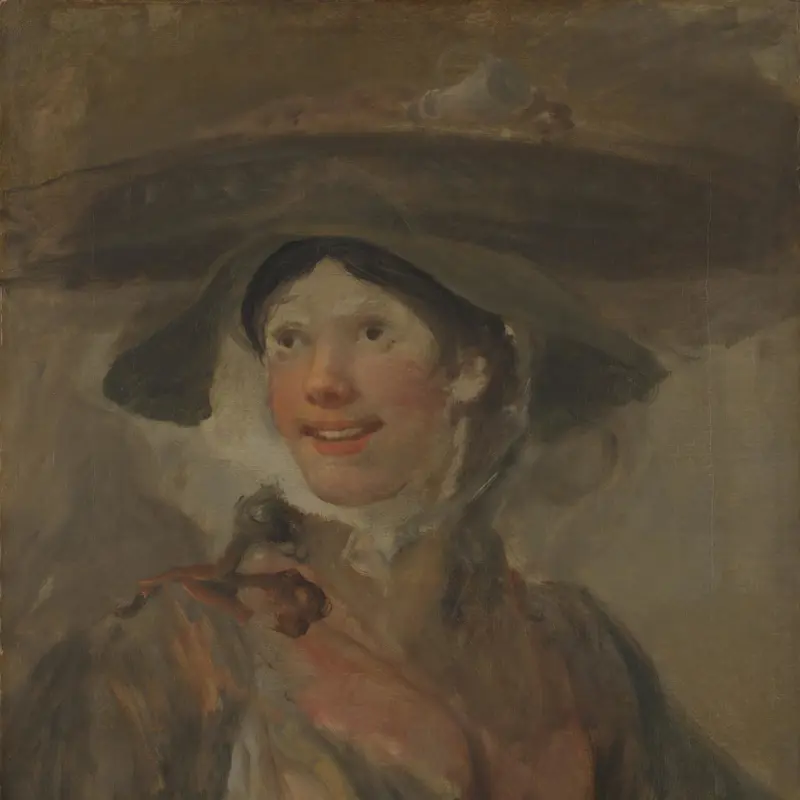Hogarth is best known for his series paintings of 'modern moral subjects', of which he sold engravings on subscription. The Collection contains the set called 'Marriage A-la-Mode'. Although pugnaciously hostile to Continental art, he succumbed to French influence. In 1753 he published his 'Analysis of Beauty', in which he stresses the importance of the serpentine line.
Hogarth was born in London, the son of an unsuccessful schoolmaster and writer from Westmoreland. After apprenticeship to a goldsmith, he began to produce his own engraved designs in about 1710. He later took up oil painting, starting with small portrait groups called conversation pieces. He went on to create a series of paintings satirising contemporary customs, but based on earlier Italian prints, of which the first was 'The Harlot's Progress' (1731), and perhaps the most famous 'The Rake's Progress'. His engravings were so plagiarised that he lobbied for the Copyright Act of 1735 as protection for writers and artists.
During the 1730s Hogarth also developed into an original painter of life-sized portraits, and created the first of several history paintings in the grand manner.

